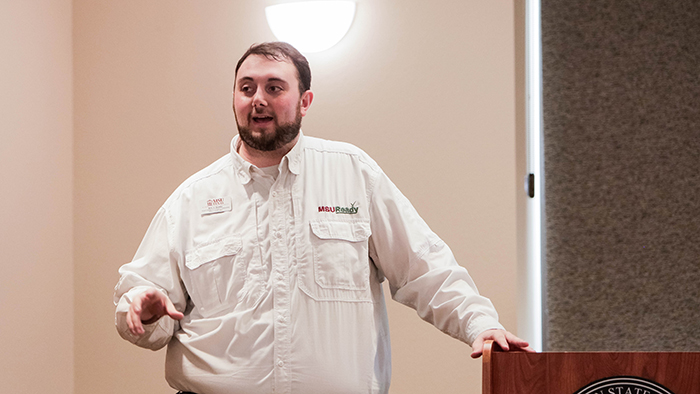Emergency preparedness focus of MSUReady
Midwestern State University has gone through many changes in the past two years. A pandemic temporarily changed its approach to learning, a snowstorm affected power availability, and fire damaged a residence building.
During this time, the MSUReady initiative has helped students, faculty, and staff to be informed, prepared, and equipped for any situation, ranging from extreme heat to active shooters. Risk Management and Safety Manager Tim Beaman and Emergency Preparedness Specialist Eric Queller are working diligently to continue the positive trend and make campus safer for everyone.
In observance of National Preparedness Month, Queller recently set up lunch-and-learn training sessions. He said their office wants to schedule additional training sessions open to all on campus. There has been extra focus on employees as Queller has discussed the importance of holding training sessions with the heads of buildings and deans. They also hope to soon have a required online course for faculty and staff, with a refresher course every two years.

“We’re trying to teach the faculty and staff how to respond and they will help the students respond appropriately,” Beaman said.
He explained the focus by comparing it to encountering an emergency at a grocery store. He said most people don’t know where to shelter when they visit the store, so workers would be expected to help customers get to safety in the event of an emergency or disaster.
In addition to training sessions, Beaman and Queller have improved signage for severe weather refuge areas. To date, 46 signs have been placed around the main campus and at the Flower Mound Distance Learning Center, and many more will be added with time.
MSUReady’s website has many resources for emergency preparedness, including building specific maps for tornadoes, advice for making a disaster supply kit, steps on how to deal with an active shooter situation, and more. The organization also offers safety materials such as guides and stickers, which are often available at training and upon request. Queller is adding pamphlets that contain information on what to do in a variety of scenarios, as well as a magnet on the back.
Beaman and Queller have grown MSU’s emergency preparedness since its start in March 2020, “And we are improving every single day,” Queller said.
